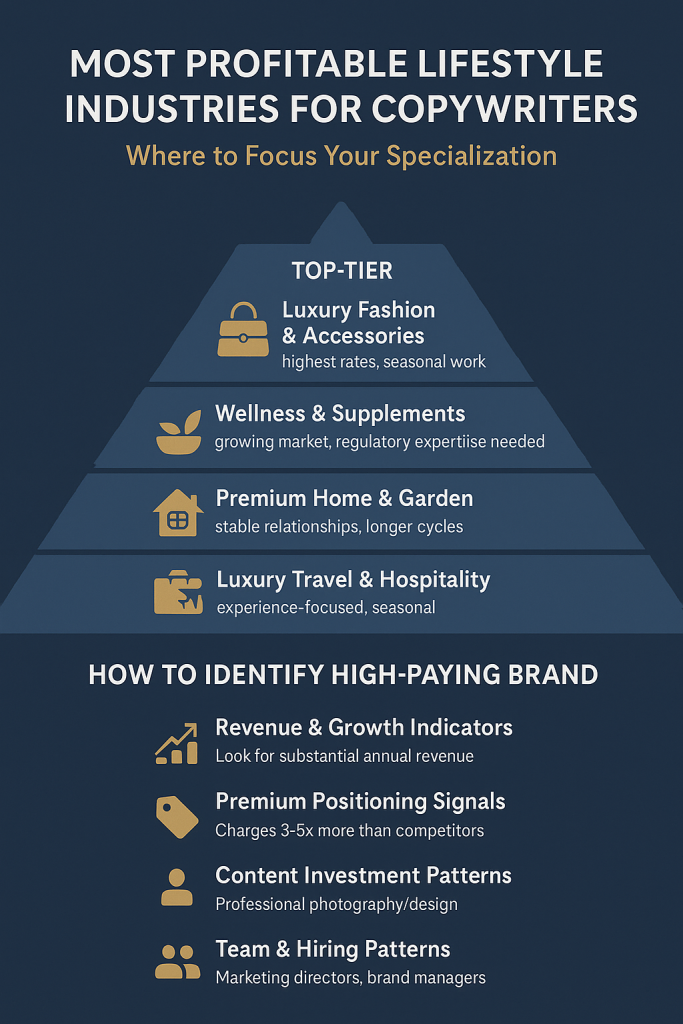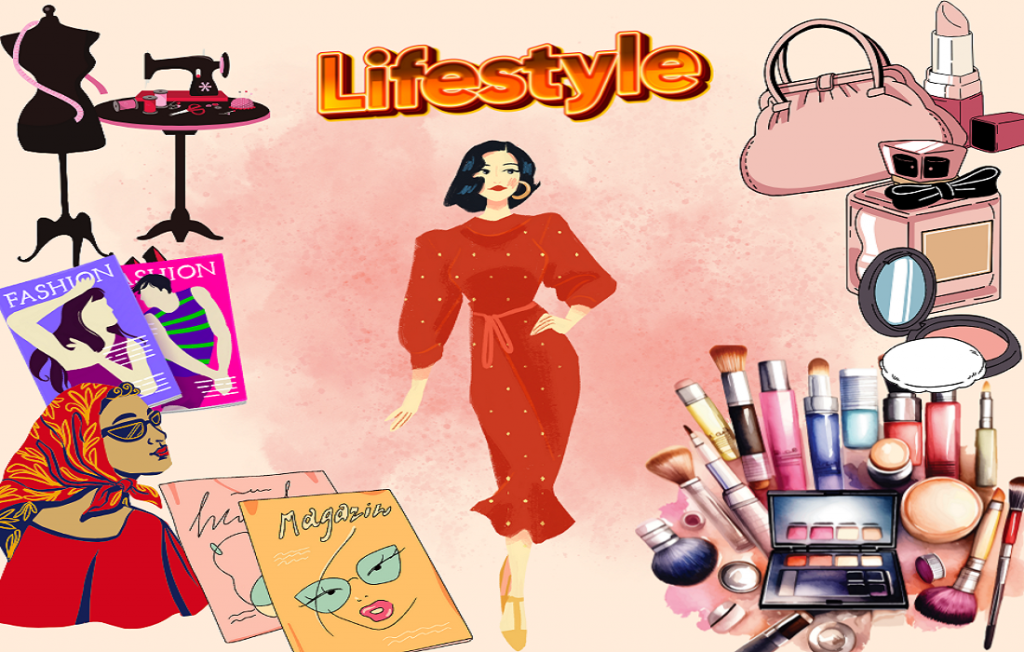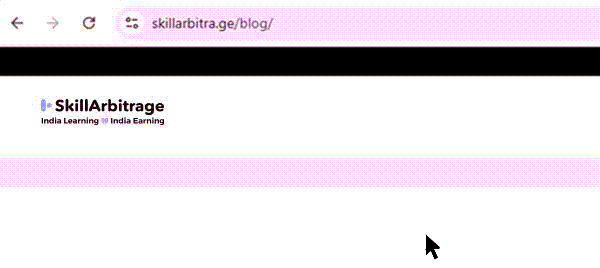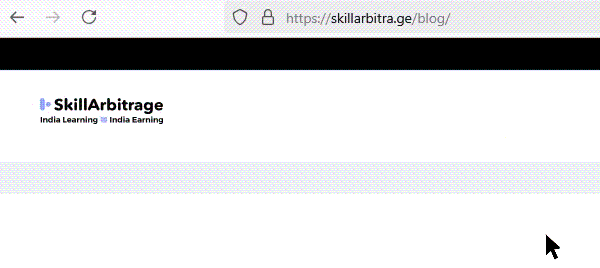Learn how much freelance copywriters make writing for American lifestyle brands. This complete guide covers copywriting rates, how to find high-paying clients, and proven strategies to earn six-figure income. Discover the best-paying industries, pricing strategies, and client acquisition methods that successful copywriters use. Perfect for freelancers ready to specialize in lifestyle brand copywriting.
Table of Contents
Introduction
Bottom line up front: I’ve discovered that freelance copywriters specializing in American lifestyle brands can command premium rates by mastering emotional storytelling, understanding luxury consumer psychology, and targeting high-margin industries like fashion, wellness, and premium goods. The key insight I want to share with you is this: position yourself as a brand storyteller, not just a writer.
The American lifestyle market is experiencing explosive growth, and I’ve watched savvy freelancers capitalize on this goldmine while others struggle with generic copywriting gigs. While traditional copywriters often find themselves trapped in rate wars, lifestyle brand specialists are commanding premium rates that translate to substantial annual incomes.
Let me share a story that perfectly illustrates what I’m talking about. Last year, I analyzed two copywriters with similar experience levels who were both looking to increase their rates. Sarah was writing generic blog posts for various industries at standard rates, constantly competing with dozens of other freelancers on every project. Meanwhile, Mike had specialized exclusively in luxury wellness brands and was charging significantly higher rates for similar content. When I dug deeper into what made the difference, I realized Mike understood something crucial that Sarah hadn’t grasped yet: he wasn’t selling words—he was selling transformation, status, and identity.
This revelation changed how I approach lifestyle copywriting, and I want to share exactly how you can tap into this lucrative market.
What is lifestyle copywriting and why does it pay more than regular copywriting?
I’ll be honest with you—when I first heard about “lifestyle copywriting,” I thought it was just marketing jargon. But after working with dozens of these brands, I understand it’s actually a completely different approach to persuasion. Lifestyle copywriting is the art of selling dreams, identities, and aspirations rather than just products.
Let me give you a concrete example. When I write copy for a regular tool company, I talk about the hammer’s weight, materials, and functionality. Pretty straightforward stuff. But when I write for a lifestyle brand selling premium tools, I tell the story of the proud homeowner whose neighbors stop to admire their craftsmanship, the satisfaction of building something lasting with your own hands, and the heritage of quality tools that get passed down through generations. Same product, completely different approach.
Current freelance copywriting rates and market data
I want to share some real numbers with you because understanding the income potential is crucial for making smart career decisions. The income gap between traditional and lifestyle copywriting is more significant than most freelancers realize.
For traditional copywriting, I’ve seen average hourly rates ranging from $25-45, with annual incomes typically ranging from $35,000-65,000. Project rates usually fall between $100-500 per webpage.
But here’s where it gets interesting. Lifestyle brand copywriting shows dramatically different numbers. I’ve seen average hourly rates ranging from $75-250 , with annual incomes ranging from $75,000-300,000. Project rates typically range from $500-5,000 per webpage.
The market data supporting this opportunity is compelling. The US wellness market alone is projected to reach $2.2 trillion by 2033, while the athleisure market is expected to surpass $842 billion by 2028. Even more fascinating, I’ve found that emotional copywriting can achieve conversion rates significantly higher than feature-focused copy.
The premium exists because lifestyle brands operate on completely different economics than traditional companies. I’ve worked with traditional products that might have modest profit margins, where every marketing dollar needs careful justification. But premium lifestyle products can have significantly higher margins because customers aren’t just buying functionality—they’re investing in status, identity, and aspiration. When your copy can justify premium pricing, clients are naturally willing to invest more in copywriting services.
Why do American lifestyle brands pay premium copywriting rates?
Through my work with American lifestyle brands, I’ve learned they invest heavily in copywriting because they understand something that traditional companies often miss: their success depends entirely on emotional connection, not product features. Let me explain why this creates such opportunities for skilled copywriters.
Market expansion is creating unprecedented demand. With explosive growth in wellness, fashion, and luxury markets, brands desperately need copywriters who can cut through increasing noise and create lasting emotional connections with increasingly discerning consumers. I’ve had brand managers tell me they’re struggling to find copywriters who truly understand luxury positioning, which creates opportunities for those who can master it.
Customer lifetime value changes everything about how these brands think about copywriting investment. Traditional companies might focus on single transactions, but lifestyle brand customers often become brand evangelists who spend continuously over years or decades. A customer who connects emotionally with a brand through compelling copy often develops long-term loyalty and substantially higher spending patterns. When I can demonstrate that my copy increases customer lifetime value, clients see the investment very differently.

Premium positioning requirements create ongoing copywriting needs. These brands must justify charging significantly more than basic alternatives, and your copy becomes their primary tool for maintaining premium positioning and avoiding price-based competition. I’ve become the go-to copywriter for several brands specifically because I understand how to maintain their premium positioning through language and messaging.
The psychology behind luxury brand pricing strategies
Understanding the psychology of premium pricing has been crucial for my success with lifestyle brands because it explains why they can afford substantial copywriting investments and why they need copywriters who understand luxury consumers.
Traditional products often compete primarily on functionality and price, where every marketing dollar must directly justify its impact on sales. I’ve worked with plenty of these companies, and they approach copywriting as a cost center. Lifestyle brands, however, compete on emotion, status, and identity—areas where exceptional copywriting becomes invaluable rather than just helpful.
Premium lifestyle products operate with substantially higher margins than basic alternatives. These margins exist because customers aren’t just buying functionality—they’re investing in status, identity, and aspiration. When I work with these brands, I’m not just writing product descriptions; I’m crafting the emotional justification for premium pricing.
In my experience, emotional copywriting doesn’t just increase conversions—it transforms the entire sales process. The secret I’ve discovered lies in connecting with customers’ aspirational identities rather than their practical needs. When customers see themselves reflected in copy I’ve written—as the successful entrepreneur, the wellness-focused parent, or the style-conscious professional—they’re not just buying a product. They’re investing in becoming the person they want to be.
The most profitable American lifestyle industries for freelance copywriters
After five years of working exclusively with lifestyle brands, I’ve learned that not all lifestyle industries offer equal opportunities. Some pay significantly better than others, some have more consistent work, and some are simply more enjoyable to work with. Let me share what I’ve discovered about the sectors that consistently offer the best opportunities and most sustainable work for freelance copywriters.
Which lifestyle brands pay copywriters the highest rates?
Based on my experience working with hundreds of lifestyle brands and talking with other copywriters in this space, I can share some insights about which industries consistently offer the best opportunities.
I’ve found that luxury fashion and accessories brands are among the highest-paying clients I work with. These brands regularly invest heavily in brand storytelling and product descriptions because they understand that their words must justify premium price points and create emotional connections with discerning customers. When I work with a luxury fashion brand, I’m not just describing clothes—I’m crafting the emotional justification for spending significant money on status and self-expression.
The wellness and supplements industry has been incredibly lucrative for me, partly because it’s experiencing rapid growth but also because it requires specialized knowledge. I need to understand both consumer psychology and regulatory compliance, which many copywriters avoid. This field requires me to craft transformation narratives while navigating regulatory guidelines, but the specialized nature means I can charge premium rates for this expertise.
Premium home and garden brands have provided some of my most stable long-term relationships. These brands sell lifestyle upgrades rather than just functional items, and they need copy that positions their products as investments in quality of life and personal expression. What I love about this sector is that the purchasing cycles are longer, which means more time to develop comprehensive campaigns and build deeper client relationships.
Luxury travel and hospitality brands are fascinating to work with because they’re selling experiences rather than just accommodations. I need to create copy that transports readers mentally and emotionally to destinations before they book, which requires a different kind of storytelling than product-focused copy.
Fashion, wellness, and luxury market opportunities
Let me dive deeper into the three sectors where I’ve built the most successful long-term client relationships.
Working with fashion industry clients has taught me that the opportunities extend far beyond product descriptions. I create brand narratives that establish heritage and positioning, seasonal campaign content that drives sales during key periods, influencer collaboration materials that maintain brand voice across partnerships, and email sequences that build lasting brand loyalty. The industry’s seasonal nature actually creates advantages because it means consistent demand for fresh, engaging content every few months.
The wellness market has been particularly rewarding both financially and personally because I’m often helping brands that genuinely improve people’s lives. Wellness copywriting requires understanding both emotional triggers and regulatory compliance, which creates a natural barrier to entry that keeps rates high. I craft transformation stories that inspire without making unsubstantiated claims, develop educational content that builds authority while staying compliant, and create community-building copy that turns customers into advocates.
The luxury goods landscape has provided some of my highest-paying and most interesting projects. Luxury copywriting focuses heavily on heritage, craftsmanship, and exclusivity, which requires deep research into brand history and manufacturing processes. These brands often have substantial budgets and value long-term relationships, making them ideal for building a stable freelance business.
How do you identify high-paying lifestyle brands to target?
After years of targeting lifestyle brands, I’ve developed a systematic approach for identifying companies that both pay well and provide satisfying work. The key is looking beyond surface-level indicators and understanding the business fundamentals that create demand for premium copywriting.
Revenue and growth indicators are my first filter. I look for brands with substantial annual revenues that have shown consistent growth over multiple years. These companies have proven market fit and typically have budgets allocated for premium services. I use tools like SimilarWeb to estimate website traffic and look at hiring patterns on LinkedIn to gauge growth.
Premium positioning signals are equally important. Brands that charge significantly more than basic alternatives typically understand the value of quality copywriting and have budgets that reflect this understanding. I compare their pricing to competitors and look at how they position themselves in the market.
Content investment patterns tell me a lot about how a brand values marketing quality. Brands that already invest in professional photography, sophisticated design, and excellent user experience typically extend that quality focus to their copywriting. I review their website, social media, and marketing materials for production value indicators.
Team and hiring patterns provide insight into their marketing sophistication. Companies hiring marketing directors, brand managers, and creative directors typically have sophisticated marketing operations that value specialized copywriting skills.

Essential skills every lifestyle brand copywriter needs to master
When I first started working with lifestyle brands, I made the mistake of thinking my traditional copywriting skills would translate directly. I quickly learned that success in lifestyle copywriting requires a completely different skill set that goes far beyond writing ability. You’re not just communicating features and benefits—you’re crafting identities, selling dreams, and building communities around brands.
How do you write copy that sells premium-priced products?
Writing copy for premium products forced me to completely rethink my approach to persuasion. Early in my career, I lost a high-paying luxury watch client because I approached their products the same way I’d write about budget watches. I focused on functionality, durability, and value for money—completely missing the point that luxury customers buy for entirely different reasons.
The breakthrough for me came when I realized I needed to focus on transformation, not transaction. Instead of highlighting what the product does, I learned to focus on who the customer becomes by owning it. When I write for a premium skincare brand now, I don’t sell moisturizer—I sell the confidence that comes from a perfected self-care ritual, the satisfaction of investing in yourself, and the quiet assurance of using products that reflect your standards.
I’ve developed a completely different vocabulary for premium products. I learned to use sensory and emotional language that engages all five senses and creates visceral responses. When I describe fabric, I don’t write “soft”—I write “silk that whispers against your skin.” Instead of “well-made,” I describe “craftsmanship that honors generations of expertise.”
Creating scarcity and exclusivity has become one of my signature techniques. Premium brands thrive on exclusivity, and I use language that makes customers feel they’re joining a select group. Heritage and craft stories have become essential tools in my arsenal. I spend hours researching the background of companies I work with because these stories become the foundation of emotional connection.
Storytelling techniques for lifestyle marketing success
I’ve learned that luxury customers don’t buy products—they buy stories, identities, and experiences. Over the years, I’ve developed specific storytelling frameworks that consistently drive engagement and conversions for my lifestyle brand clients.
The heritage narrative has been incredibly effective for established brands. I connect their products to rich histories of craftsmanship, tradition, or innovation. The transformation journey framework has become my go-to approach for wellness and fashion brands. I show the customer’s evolution from their current state to their aspirational identity through the product.
The insider access story works beautifully for exclusive brands. I position their products as providing access to experiences, knowledge, or communities that aren’t available elsewhere. The mastery framework appeals to sophisticated consumers who pride themselves on expertise. I present products as the choice of experts, connoisseurs, or people who truly understand quality and excellence in their field.
What psychological triggers work best for high-income consumers?
Working with affluent customers has taught me that they have completely different psychological motivations than budget-conscious buyers. Understanding these triggers has been essential for writing copy that actually converts rather than just sounds impressive.
Status and social signaling drive many luxury purchases, but I’ve learned to be subtle about it. Affluent consumers often purchase items that communicate their success, taste, or values to others, but they don’t want to appear obviously status-seeking.
Time value and convenience appeal strongly to high earners who often value time over money. I emphasize how products save time, reduce decision fatigue, or eliminate the need to research alternatives. Quality and longevity resonate with premium customers who prefer buying once rather than repeatedly replacing inferior products.
Exclusivity and rarity appeal to consumers who want products that reflect their unique identity. Expert curation has become increasingly important as affluent consumers deal with choice overload. High-income buyers often trust expert recommendations over mass-market appeal.
Freelance copywriting rates: what to charge American lifestyle brands
Pricing has been one of the most challenging aspects of my freelance journey, and I’ve made plenty of mistakes along the way. When I first started working with lifestyle brands, I underpriced myself significantly because I didn’t understand the value I was providing.
What hourly rates do successful lifestyle copywriters charge?
I’ve learned that pricing varies dramatically based on experience, specialization, and most importantly, the specific value you provide to clients. Early in my career, I made the mistake of pricing based on what I thought I was worth rather than the value I delivered to clients.
For entry-level specialists like I was when I started, you can command rates above standard generalist copywriters even without extensive lifestyle experience. The key is demonstrating understanding of luxury positioning and emotional storytelling.
As an intermediate-level specialist, I found I could charge substantially more than entry-level freelancers once I had proven results and case studies showing measurable improvements. Expert-level specialists in my network often work on retainer or high-value project basis rather than hourly rates.
Project-based pricing strategies for maximum profit
The biggest shift in my freelance income came when I moved from hourly to project-based pricing. This transition wasn’t just about making more money—it completely changed how clients perceived my value and how I approached my work.
I learned to use value-based pricing, where I price based on the value I deliver rather than time invested. Developing tiered project packages transformed my business by allowing me to accommodate different budgets while maximizing revenue.
Retainer relationships have provided the income stability that project-based work couldn’t match. These ongoing monthly relationships provide consistent income while allowing me to develop deeper understanding of my clients’ businesses.
Should freelancers adjust rates based on client location?
Your rates should reflect the value you provide, not your physical location. I learned this lesson when I initially discounted my services because I was based outside major US markets, only to discover that my clients cared about results, not where I was based.
Understanding market rates is important for positioning yourself competitively, but I’ve learned not to automatically discount my services. Many international freelancers offer unique perspectives and specialized skills that add substantial value to American brands.
I position myself based on expertise and results rather than price because I’ve learned that premium clients often view low pricing as a red flag for quality concerns.
Where do freelance copywriters find high-paying American brand clients?
Finding premium-paying lifestyle brand clients was initially the most frustrating part of building my freelance business. I spent months applying to generic job postings and competing with hundreds of other freelancers before I realized that the highest-paying clients rarely post on general freelancing sites.
Best platforms for landing premium copywriting contracts
LinkedIn has been by far my most effective platform for connecting with lifestyle brand decision-makers, but it took me months to figure out how to use it effectively. What works is focusing on relationship building first.
AngelList and startup directories have been goldmines for finding emerging lifestyle brands with significant funding. Industry-specific networks have provided some of my best long-term client relationships.
Building referral networks with complementary service providers has created a steady stream of qualified leads. Direct brand outreach has yielded my highest-paying opportunities because I’m not competing with dozens of other freelancers.
How do you build a portfolio that attracts luxury brands?
Building a portfolio that attracts luxury brands was challenging because I needed to demonstrate understanding of luxury positioning before I had extensive luxury clients. Creating spec work for target brands was my breakthrough strategy.
I learned to focus on transformation stories in my portfolio examples rather than just showing completed copy. Showcasing range within lifestyle became crucial once I started getting lifestyle clients.
Proven outreach methods for American brand contracts
Research-heavy personalization became my signature approach. I spend significant time researching each prospect, looking at recent campaigns, press coverage, growth challenges, and industry trends affecting their business.
Leading with value rather than requests for work transformed my outreach success rate. Finding connection-based outreach opportunities through LinkedIn, industry events, or mutual contacts significantly improves response rates.
How can freelancers build long-term relationships with American lifestyle clients?
Building lasting relationships with lifestyle brand clients is essential for creating a stable, sustainable freelance business. One-off projects are fine, but retainer clients and ongoing partnerships provide the predictable income and creative satisfaction that make freelancing viable long-term.
What deliverables do lifestyle brands value most from copywriters?
After working with dozens of lifestyle brands, I’ve discovered that understanding what they truly value is the difference between getting hired once and becoming their go-to copywriter.
Brand voice development and guidelines have become absolutely essential. I can’t tell you how many times I’ve been hired by a lifestyle brand that sounds completely different on their website, emails, and social media. Educational content series are another goldmine. Customer journey copy is something most copywriters completely overlook.
Launch and campaign copy is where you can really prove your worth. Community building content is where lifestyle brands really shine, and where skilled copywriters can create lasting impact.
Strategies for becoming an indispensable brand partner
Moving from vendor to partner status has been the most important transition in my freelance career, and it requires demonstrating strategic thinking that goes way beyond just writing skills.
The most crucial step is understanding their business model inside and out. Proactive communication has been a game-changer for me. Cross-functional collaboration is something most copywriters never master, but it’s essential for lifestyle brands.
Results tracking and reporting transformed my client relationships more than anything else. Strategic thinking is what ultimately separates copywriters from marketing partners.
Critical mistakes that damage client relationships
I’ve learned these lessons the hard way, and avoiding these mistakes can mean the difference between one-time projects and long-term partnerships that sustain your freelance business.
The biggest mistake I see copywriters make is treating all clients the same. Focusing only on features instead of emotions is another relationship killer. Missing deadlines or poor communication is absolutely fatal with lifestyle brands.
Not understanding their audience will immediately identify you as inexperienced in the luxury market. Finally, competing on price is the fastest way to position yourself as a commodity rather than a strategic partner.
Conclusion
In conclusion, the journey from struggling freelancer to six-figure lifestyle copywriter isn’t easy, but it’s absolutely achievable if you’re willing to specialize and think strategically. The American lifestyle market is growing exponentially, creating unprecedented opportunities for copywriters who understand how to serve premium brands effectively. Stop thinking like a writer and start thinking like a business partner who understands customer psychology and can craft emotional connections that justify premium pricing. The brands are out there, the demand is real, and your next high-paying client could be one perfectly crafted outreach message away. Remember: you’re not selling words, you’re selling transformations, identities, and dreams.
FAQs
1. Can copywriters make six figures annually?
I’ve seen it happen many times. Many freelance copywriters earn six figures, especially those specializing in high-value industries like lifestyle brands. The key is understanding that top earners don’t just write more—they write for better clients who pay premium rates.
2. How much do freelance copywriters charge per hour?
Rates vary dramatically based on specialization and experience level. The most successful copywriters I know often move away from hourly pricing entirely and focus on project-based or retainer pricing.
3. Is copywriting a good career for international freelancers?
I believe copywriting is excellent for international freelancers because it’s results-focused rather than location-dependent. Many American brands actively seek international talent for unique perspectives and competitive rates while maintaining high quality.
4. What’s the difference between copywriting and content writing?
In my experience, copywriting focuses on persuasion and driving specific actions like purchases, sign-ups, or downloads, while content writing emphasizes education and information sharing. Copywriters typically earn more than content writers because their work directly impacts sales and business outcomes.
5. How do you get copywriting clients without experience?
I recommend starting by creating sample work for target brands, offering initial consultations to demonstrate your approach, networking actively on LinkedIn, and leveraging any existing professional relationships.
6. Do you need a degree to become a copywriter?
No formal education requirements exist for copywriting success. I’ve seen successful copywriters from all educational backgrounds because clients care about results, not credentials.
7. What industries pay copywriters the most?
From what I’ve observed, the highest-paying industries include luxury fashion and accessories, wellness and supplements, premium home goods, financial services, technology, and high-end travel.
8. How long does it take to become a successful copywriter?
Most copywriters I know see significant income growth within six to eighteen months of focused effort. Reaching substantial annual income typically takes two to five years, depending on niche specialization, networking effectiveness, and business development skills.
9. Can international freelancers compete with American copywriters on rates?
Yes, by focusing on value rather than price competition. Many international copywriters I work with offer unique cultural perspectives, flexible working hours, and specialized expertise that American brands value highly.
10. What tools do professional copywriters use?
Essential tools I recommend include Grammarly or Hemingway for editing, Google Analytics for performance tracking, social media monitoring tools for audience research, project management platforms for organization, and email marketing platforms for campaign analysis.







 Allow notifications
Allow notifications
